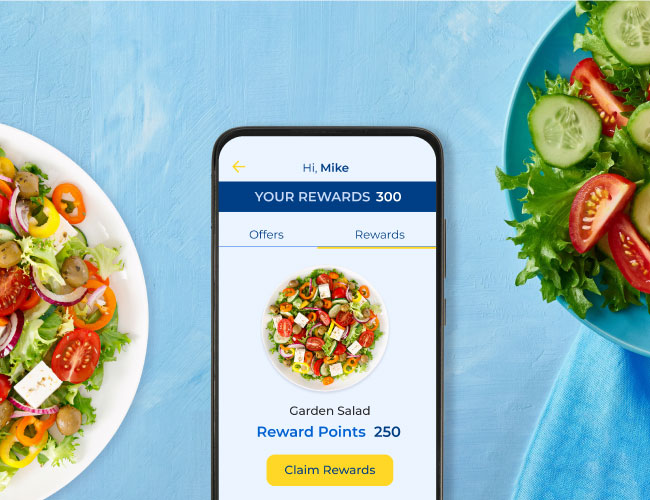How to Win With Social Media: A Small Retailer’s Guide
Running a retail business and feel like a small fish in a big pond? What if there was a way to make waves without needing a big budget? There is thanks to social media marketing. In this post, we’ll explore how to navigate its waters and turn your small business into a big deal.
To reach customers, build brand loyalty, and drive sales in today’s competitive business landscape, small business owners must take advantage of every tool at their disposal. No longer a nice-to-have or an afterthought, a social media presence is now a key piece of the marketing mix for businesses of any size that want to build their brands and grow. For small retailers, this means utilizing social media platforms to reach their target customers and showcase their unique products and services. Leveraging social media effectively can provide small retailers with opportunities to:
- Engage with customers through interactive content
- Build a loyal customer base by responding to feedback and inquiries
- Promote sales, special offers, and events
- Showcase their brand story and values to stand out from competitors

The Potential of Social Media in Retail
The numbers don’t lie: according to Sprout Social, 78% of consumers are willing to buy from a company after having a positive experience on social media. As a small retailer, social media platforms serve as avenues to effectively communicate with existing customers, attract potential ones, and provide immediate and personalized customer service.
Social platforms enable innovative marketing tactics such as video presentations, live interactions, and customized promotions. These tend to resonate with today’s consumers more than traditional advertising methods. They also open the door to a wealth of user data, yielding valuable insights into customer behavior and preferences. This can guide your product selection and marketing efforts.
Choosing the Right Platforms for Your Business
Understanding where your target customers spend their time online is vital to your social media marketing success. Consider conducting a survey among your existing customers to find out which platforms they frequent. Instagram and TikTok are favored among younger audiences. Facebook is widely used by all age groups. LinkedIn is most suitable for B2B interactions, and Pinterest often inspires idea generation and shopping.
Content Strategy for Small Retailers
Developing a thoughtful content strategy is essential for successful social media marketing. It’s in your best interest to create content that goes beyond promotion and is valuable to your audience. How-to videos, informative and insightful blog posts, and user-generated content such as customer testimonials or photos can significantly boost engagement with your brand. Behind-the-scenes content or employee spotlights serve to highlight the human face of your business and build a closer connection with customers.

Let Your Customers Do the Selling
Encouraging your customers to post about their experiences with your brand or products (user-generated content) helps to foster a sense of community around your business, generates free marketing content, and often leads to higher customer loyalty. Another way to expand visibility is to collaborate with influencers who align with your brand values and have a following that matches your target demographic. Such collaborations offer cost-effective options for small retailers with limited marketing budgets.
Engaging with Your Audience
Successful social media marketing involves more than just publishing content—it’s about fostering a two-way conversation with your audience. Make it a priority to promptly to comments and inquiries. Acknowledge with appreciation any user-generated content. Participate in relevant discussions and trends within your industry to enhance your brand visibility and credibility.
The Power of Analytics
Social media analytics yield valuable data that can help refine your marketing strategy and maximize your return on investment. For instance, by tracking engagement rates, follower growth, and content performance, you can identify what types of posts resonate most with your audience and adjust your content strategy accordingly
Effective Use of Paid Social Media Advertising
While organic growth through quality content and audience engagement is crucial, don’t overlook the potential of paid social media advertising. These ads provide a cost-effective way to reach a larger or more targeted audience quickly. Keep track of which ads perform the best to ensure you’re getting the most value for your money.
Social Media Management Tools for Small Retailers
With the numerous demands of running a small business, managing your social presence might feel overwhelming. Thankfully, there are plenty of tools, such as Hootsuite, Buffer, and Sprout Social to streamline the process. These technologies enable you to schedule posts, monitor engagement, analyze performance, and manage multiple social media accounts in one place.

How Much Time Should Small Retailers Invest in Social Media Marketing?
A common conundrum for small retailers venturing into social media marketing is, “What should be the ideal time investment to produce fruitful results?” This puzzle has no one-size-fits-all solution; instead, it depends on variables such as your business’s size, the audience you’re targeting, and the platforms you’re leveraging.
The answer will vary depending on multiple factors: the size of the business, the target audience, and the number of platforms used. A Hubspot study revealed that 43% of small businesses spend around 6 hours per week on social media, which is approximately a single business day. On the other hand, a report from NerdWallet suggests that the majority of small businesses spend more than 20 hours per week on marketing activities, a significant chunk of which is dedicated to social media.
The key takeaway here: social media marketing is not a “set it and forget it” strategy. It requires consistent engagement, content creation, and community management to be effective. The goal is to strike a balance between investing enough time to reap substantial benefits, and not getting so engrossed that your return on investment diminishes. As with any marketing strategy, it’s important to evaluate and adjust your time investment based on the results you’re seeing.
Embracing Social
While you might have been thinking, “I’m just a small business owner, how can I possibly compete with the big guys?”, as we’ve now seen, the beauty of social media marketing is that it levels the playing field. Sure, the landscape is ever-changing, and yes, it may feel a bit overwhelming at first. But the rewards can be substantial.
Don’t worry about being a small player. With creativity, effort, and your new know-how you can showcase what makes your business special, connect with your target customers, and drive sales — all without breaking the bank. So, roll up your sleeves and dive in!
Would you like to retain more revenue by eliminating credit card processing fees? Visit us here to find out how we help retailers go fee-free.




